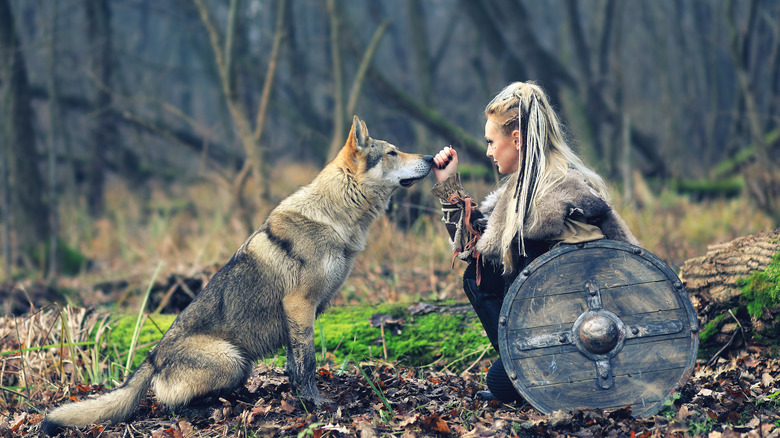Did Lagertha From Vikings Really Exist?
Lagertha, played by Katheryn Winnick, is one of the core characters of the TV show "Vikings" — she is not only (initially) the wife of protagonist Ragnar Lothbrok, but is herself a very active figure both politically and militarily. She is often seen on the battlefield alongside her fellow Vikings and fighting with great proficiency. Lagertha is also shown as being very strong-willed relative to her culture, leaving Ragnar rather than enduring his infidelity as he suggested she should.
However, proof of her historical existence is limited to the pages of ancient literature (as is the case with Ragnar and many other characters on the show), specifically the "Gesta Danorum" by Saxo Grammaticus where she is described as a similarly impressive individual (via Ranker). As historians have suggested, the basis for Grammaticus' account may not be that of a single person named Lagertha. Instead she may be a composite character who represents any number of different real and mythological Viking women (via World History Encyclopedia).
While Lagertha might not have existed, there were probably many women like her
While shield-maidens such as Lagertha have been a part of Norse lore for centuries, their existence likely did not commonly extend to battles and wars, with only a handful of battlefield remains possibly being those of women (via Asgard). That does not mean women trained in combat were rare, though. In an environment where one's own village was often the only reliable source of protection in the even of a raid, it would have been necessary for every able-bodied people to know how to fight (via History).
In this light, the show's Lagertha herself starts out as a lowly farmer who is nonetheless able to defend herself when threatened. As far as how Grammaticus subjectively wrote his version of Lagertha it is possible that he was also influenced by tales of the goddess Thorgerd, since the details of their stories are similar to the extent that many in the past have conflated the two figures (via Cheat Sheet).

